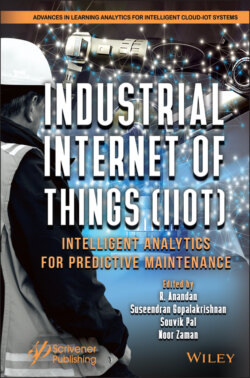Читать книгу Industrial Internet of Things (IIoT) - Группа авторов - Страница 21
1.5 Trends
ОглавлениеAdaptive Intelligence is about helping to generate better business decisions by integrating the computational power of internal and external data in real time with the computing infrastructure and highly scalable decision science. In this type of systems, relating the adaptive learning, the characteristics are monitored so that there is an adjustment in order to improve the process. The efficiency of these systems depends on methodologies adopted to collect and diagnose information related to needs and characteristics, in relation to how this information is processed to develop an adaptive context. These applications essentially make businesses smarter, allowing them to provide customers with better products, recommendations, and digital services, all of which generating better business results [55].
Digital twins are related to the practice of creating a computer model of an object, such as a machine or even a human organ, or yet a process like a climate. By studying the behavior of the digital twin, it is possible to analyze, understand, and predict the behavior of its counterpart in the real world and to solve issues before they occur. However, to take full advantage of the digital twin’s potential, real systems need not only be networked with each other but also need to develop the ability to “think” and act autonomously [56].
This development tends toward AI, from simple mutual perception and interaction to independent communication and optimization, also requiring integrated information systems that allow a continuous exchange of information, still demanding powerful software systems that can implement them along the entire value chain, and planning and designing products, machines, and plants, in addition to operating products and production systems. The technology of digital twins allows users to act in a much more flexible and efficient way, as well as personalize their manufacturing [57].
Intelligent Edge refers to the place where data is digitally generated, interpreted, analyzed, and treated, i.e., the use of this technology means that analyses can be managed more quickly and that the probability of data being unduly intercepted or leaked is considerably less. This technology refers to the analysis of data and the development of solutions in the place where the data is generated, reducing latency, costs, and security risks, making associated businesses more efficient, still pondering that the three largest categories of Intelligent Edge are the edges of operational technologies, IoT edges, and IT edges [58].
The use of Intelligent Edge technology helps to maximize business efficiency, since instead of sending data to a data center or even to a third party to perform processing, the analysis is performed at the location where the data is generated. This means not only that the analysis can be performed more quickly, but it also means that companies are much more self-sufficient and do not depend on potentially flawed network connections to do their job [58].
Predictive maintenance is one of the most promising branches for industrial applications based on the use of data received from the factory to avoid production failures. This type of system eliminates unnecessary maintenance and increases the probability of avoiding failures, which involves a machine or even a component with sensors capable to collect and transmit data and then analyze it, and perform storage in a database. Then, this database offers comparison points for events, as they occur [59, 60].
The predictive maintenance model aims to periodically monitor the operation of machinery, equipment, and parts in a factory, in order to detect failures before they occur and prevent interruptions in the production line, relating IoT and AI in order to assist in the survey and management of data from all sectors of production, integrating the company’s departments, performing analyzes to take advantage of the useful life of industrial equipment, indicating the real conditions of its operation, detecting possible deterioration of parts and components, and ensuring the reliability and availability of services. This information obtained is used to support decisions and present suggestions for actions and interventions, generating better results than with the use of raw data [59, 60].
